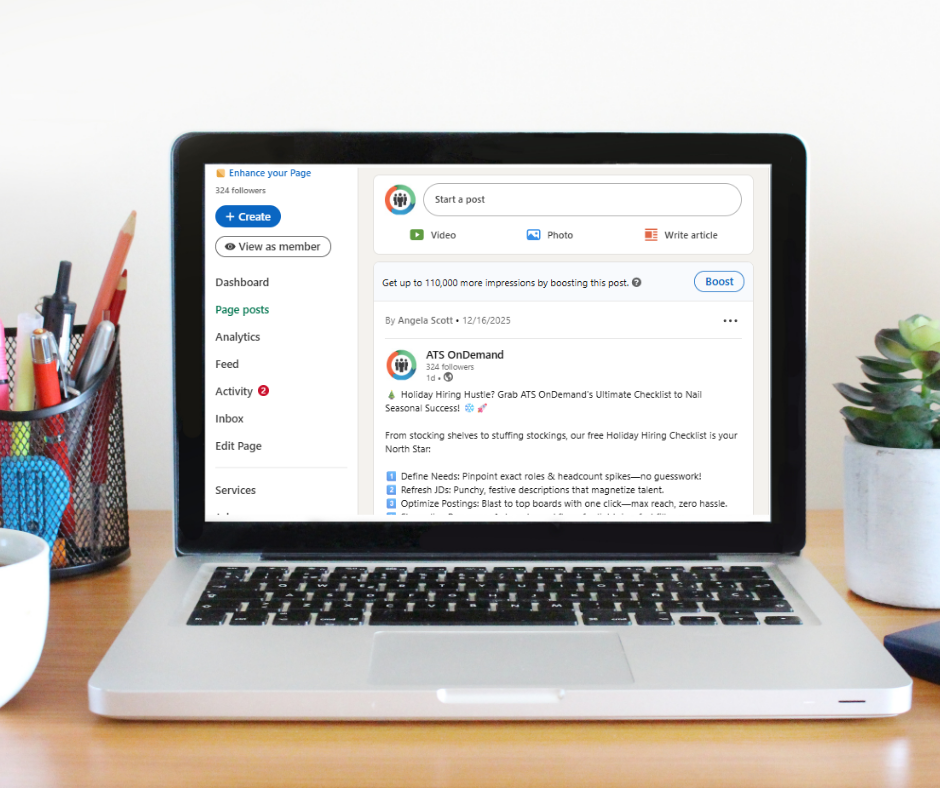How to Hire with Staying Power:
Employee retention doesn’t begin with onboarding, the first performance review, or even the welcome lunch. It starts long before a candidate signs an offer—at the moment you write the job posting. Too many companies treat hiring as a speed race to fill an empty chair, but the truth is simple: if you want people to stay, you have to hire with that goal in mind.
1. Why Retention Starts at the Job Posting Stage
The job description is more than a list of duties—it’s a promise. The clearer and more realistic it is, the better chance you have of attracting candidates who will thrive in the role. When postings are vague, inflated, or misleading, you’re planting the seeds for quick turnover.
What to do instead:
- Be brutally clear about expectations. Outline core responsibilities, performance metrics, and workload realities.
- Highlight growth opportunities honestly. Don’t promise a promotion track if the role is more of a steady-state position.
- Show your real culture. If you’re a fast-paced, high-accountability shop, say so. You’ll attract those who enjoy that rhythm—and deter those who don’t.
Think of the posting as the first filter. It should repel the wrong candidates just as much as it attracts the right ones.
2. How to Spot High-Flight-Risk Candidates Before You Hire Them
Some candidates look great on paper but are statistically more likely to leave early. Spotting these signs early can save you months of wasted training and rehiring.
Red flags to watch for:
- Frequent short stints. A résumé full of roles under 18 months may indicate a pattern—unless there’s a clear explanation.
- Vague reasons for leaving past jobs. Listen carefully during interviews. If the story shifts or feels rehearsed, probe deeper.
- Mismatch in career trajectory. If your role is a step down or sideways from their path, they may be keeping the seat warm while they hunt for something “better.”
- Overemphasis on compensation. Money matters, but if it dominates the conversation, they might jump when the next offer is higher.
Pro tip: Past behavior is a better predictor of future behavior than interview charm. Always back up gut feelings with reference checks and scenario-based interview questions.
3. Hiring for Culture Add vs. Culture Fit
“Culture fit” has been a hiring buzzword for years, but it’s also been criticized for being a shortcut to groupthink. What you really want is culture add—people who share your core values but bring something new to the table.
Culture fit asks: “Does this person blend in?”
Culture add asks: “Will this person make us better?”
When you hire only for fit, you risk building an echo chamber. Culture add broadens your perspective, improves problem-solving, and makes your team more resilient.
How to hire for culture add:
- Define your non-negotiable values (e.g., integrity, accountability, collaboration).
- Identify gaps in skills, perspectives, or approaches that your team needs.
- Ask questions that reveal how a candidate would challenge norms while respecting core values.
*We recently launched our new AI mascot named Bradford. We have come to realize that Bradford has been with us for the past 20 +years and has unparallel knowledge in the talent management software space.*
What Would Bradford Say:
Retention isn’t a separate HR initiative—it’s baked into every hiring decision. Write honest job postings, screen for stability, and seek out people who will expand your culture, not just mirror it. Do that, and you won’t just fill roles—you’ll build teams that stay.




